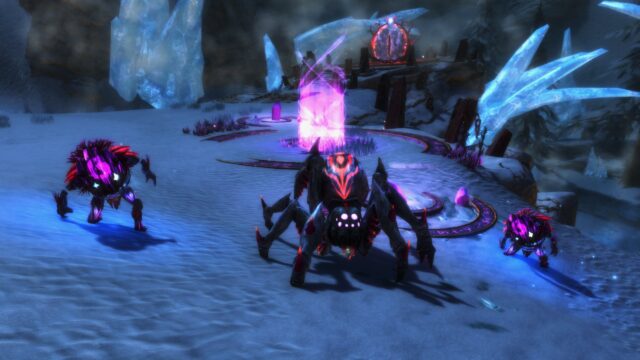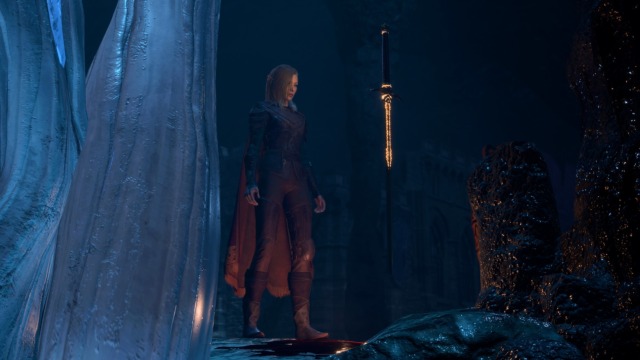Assassin's Creed: Revelations Review

What do you expect from video games? Maybe there are things in them that you absolutely dislike, but there are also things that you are willing to overlook? Another question: Will your answers change in any way if I tell you that we are talking about a sequel?
Assassin’s Creed: Revelations is the fourth version that has emerged since the release of the main game Assassin’s Creed in November 2007. The new release was presented this month and immediately became the most controversial sequel to the main game since the release of BioShock 2 in 2010.
Just like with BioShock 2, many people tend to see the release of “Revelations” as driven by corporate interests for the sake of making money, rather than the interests of the fans. In terms of the storyline of these games, the sequel was not really necessary. But apparently, the creators thought differently. By the way, for your information: those who made the greatest contribution to the development of the first parts of BioShock and Assassin’s Creed were not even invited to work on the sequels.
Just like with the second part of BioShock, the release of Assassin’s Creed: Revelations this month felt like being constantly served your favorite dish throughout the whole day: in such a case, even the best thing can quickly become tiresome. Another parallel between these games is that no one initially expected them to have original inventions and stunning special effects. They should simply be enjoyable to play.
Your impression of “Revelations” will directly depend on what you expect from sequels, what you like or dislike about them, and, finally, how important the gameplay features are to you.

We are burning the fleet.
What should an assassin do?
In the new game, both the campaign and multiplayer modes are available. The multiplayer features are an expanded version of the format introduced in last year’s Assassin’s Creed: Brotherhood. Like before, it mainly revolves around players fighting each other on maps filled with computer-controlled characters that appear as player characters. The idea of such multiplayer has been continued in “Revelations,” undoubtedly improving upon last year’s version of the game.
The new campaign in “Revelations,” unlike the multiplayer, still leaves some questions about its own success. According to the game’s annotations, it is marketed as a chapter of “answers” and serves as the concluding part of the trilogy of annual releases of new Assassin’s Creed games. In it, the player goes through the campaign as the Italian assassin of the late 15th to early 16th centuries, Ezio Auditore. The trilogy of the same name did not originate from the first part of Assassin’s Creed, which immediately raised suspicions among developers that “Revelations” is significantly more focused on making money than being recognized as a classic. “Revelations” continues the game from 2009, Assassin’s Creed II, and last year’s “Brotherhood.” Surprisingly, the sequel is not devoid of meaning. It can be compared to “Brotherhood” in terms of intensity and variety of content, and in terms of the number of diverse gameplay ideas, the continuation significantly surpasses the previous parts of the trilogy.
The creators promise us that in the new game, we will learn a lot of new things about the ongoing storyline of the game, the long war between the Assassins and the Templars, why such incredible events happened in the final part of “Brotherhood,” and much more. In other words, we are given the opportunity to discover many revelations. During the campaign, we will have to fight as Ezio, mainly in a mission that takes place in 16th-century Constantinople. But throughout the game, we will also play as Altair, the main character of the first part of Assassin’s Creed, and Desmond Miles, Altair and Ezio’s descendant, who lives alternative lives of his ancestors in 2012.
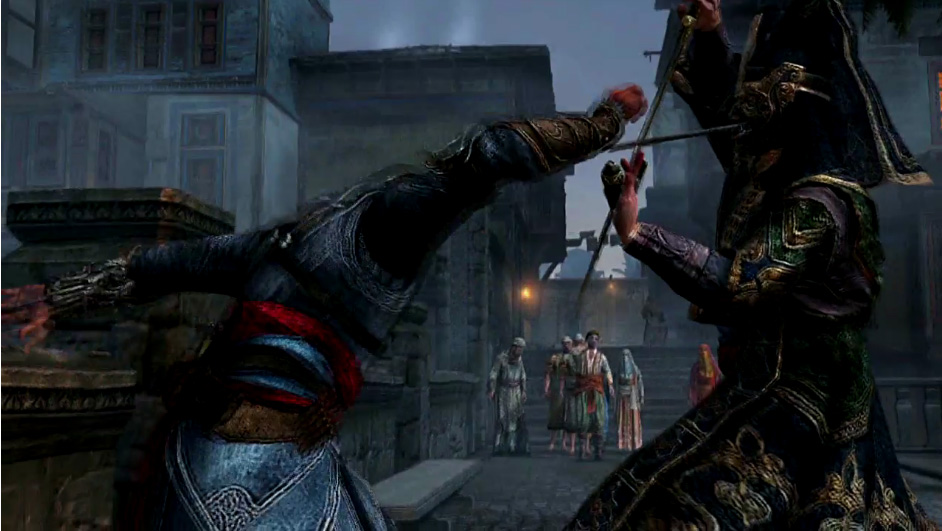
One positive aspect of “Revelations” is that the game turned out to be difficult to predict compared to previous installments. After playing through the game’s campaign for nineteen hours, you will have completed 80%, but still won’t have a clear understanding of why everything happened the way it did in the end of “Brotherhood”. Ezio’s fate will remain unknown. It is only revealed in the final animated cutscene, which was also included with the game. However, you will still learn a lot about Desmond’s life, as well as about Altair and his closest associates, through brief narratives during numerous gameplay moments.
But the most complete picture is described in the game’s book. If you truly seek revelations, you simply cannot do without the Encyclopedia of Assassin’s Creed, published by the game’s creators the day before. This book fills in all the information gaps and provides answers to all the questions. It is the best solution for those fans of the game who have accumulated numerous “whys”, “hows”, “whats”, and “whens” since 2007, without finding any answers. In fact, the number of revelations in the book far exceeds the number in the game itself.
Let’s return to discussing the positive and negative aspects of this particular sequel. Among the negatives of “Revelations” is that the game appeared too quickly and, in terms of its meaning, was too similar to the two parts of Assassin’s Creed released in 2009 and 2010. Among the positives of this sequel, the design of the game far surpasses its predecessors both in technical and purely visual aspects.
What Ezio could do in the game’s Florence, Venice, and Rome over the past two years is now available in virtual Constantinople. He can navigate through crowds on city streets, climb buildings, and, of course, commit assassinations. Players still travel through time, transforming from hunter to prey, from an innocent accused victim to a cold-blooded criminal, plunging a knife into a guard’s throat in front of a stunned crowd and disappearing unpunished, as swift as a bird.
This year, there hasn’t been a game that plays like Assassin’s Creed: Revelations. This cannot be said about most modern adventure games, as they usually have common elements. But no one has been able to create something similar with such rich, detailed cityscapes and the ability to transport oneself to the same streets with a difference of hundreds of years.
Perhaps this sequel should not have been criticized immediately after its release if players did not know what awaited them a year later. In principle, “Revelations” is a very worthy game if considered as a standalone unit, abstracted from “Brotherhood”. Of course, it is not a game for November 2012. Everyone is anticipating Assassin’s Creed III, which promises to amaze us with new developments and new characters. But to some extent, “Revelations” became the surprise that the third part of the game was supposed to be only a year later. But what a surprise they became… “Revelations” are magnificent. Their Constantinople is unmistakably distinguishable from the Italian cities of the past two years. It accurately captures all the vibrant colors inherent in the capital of the Ottoman Empire at that time. They are especially noticeable in the eastern spices sold on the city streets, in the colorful carpets that adorn all the bazaars, and in the clothing of the city’s inhabitants. And the color of the sunset resembles the repeated accidental repetition of colors from the most magnificent paintings. All these colors sometimes make the assassin pause in his city running and stand still for a few moments, gaping and admiring the beauty around him.
The gameplay in “Revelations” is a mountain of ideas, mostly collected from previous Assassin’s Creed games. The protagonist’s main “trick” remains his acrobatic abilities, speed, and precise, lightning-fast strikes when committing assassinations. As before, Ezio can use his fists, swords, or daggers for these purposes. Since Assassin’s Creed II, he has also had a primitive pistol, which, as before, takes a long time to reload. The presence of slow-acting poison, the ability to throw knives, and launch fire arrows have also remained with the hero. Like in last year’s version of the game, he can summon the Brotherhood of Assassins to help him in battle, either together or separately. In addition to all this, a “hook blade” has been added, which allows Ezio to search the pockets of those he fights or cling to ropes between buildings and slide along them, quickly evading pursuit.
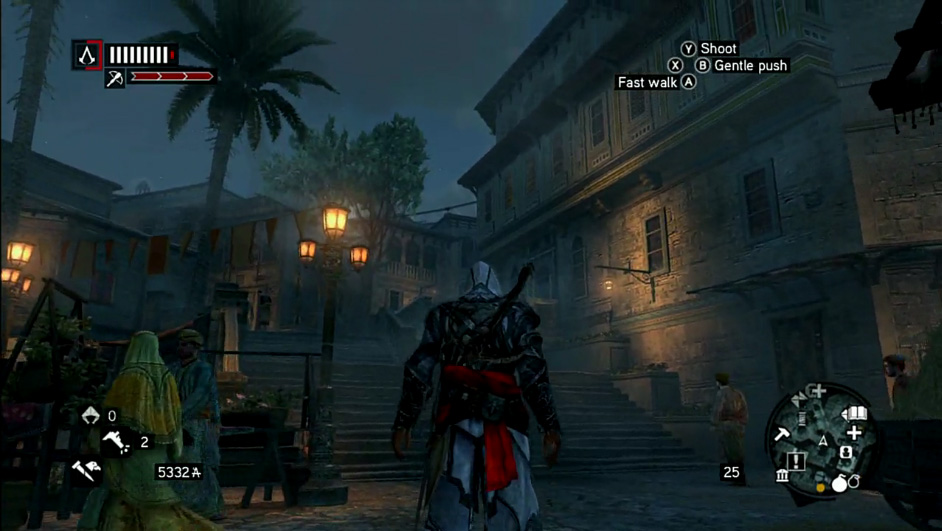
What’s new?
The main radical innovation of the game is that Ezio has bombs. These are not just grenades that we are used to seeing in war games. They can be assembled from several different types of shells, one of several types of gunpowder, and several types of fillings that scatter around upon detonation. These fillings can be smoke, poisonous gas, splashes of blood, and even gold coins. The player is given the opportunity to quickly assemble different types of bombs. For example, you can quickly construct a smoke bomb with a wide radius of action, which explodes three seconds after being thrown, covering the Templar soldiers with a thick cloud and giving Ezio the opportunity to immediately take their lives. Or a medium-radius bomb with wire hedgehog filling. These hedgehogs scatter on the surface (whether it’s a floor or ground), causing Ezio’s pursuers to stumble and lose their balance. Another type of bomb is a sticky bomb, which explodes with poisonous gas five seconds after being attached to an unsuspecting guard. A lot of commotion is also caused by a bomb made of coins, the explosion of which scatters a small amount of money for many meters around. The crowd rushes to these coins like pigeons to bread crumbs, creating excellent cover for Ezio’s new exploits.
The appearance of bombs in Ezio’s arsenal transforms him from a lover of acting quietly and unnoticed into a brazen disturber of peace, acting openly. At first glance, this suggests that such a change in the character’s behavior is due to a lack of ideas about the spectacle of the game. And perhaps, instead of another sequel, the creators should have taken a break and thought more carefully about the formula of “Revelations”? No, this is just a mistaken first impression. When the player starts using bombs, they realize that they are facing the most advanced mechanics available in today’s gameplay. Lately, players have often wondered what video games of the new generation, replacing today’s ones, will be like. What will Xbox 360 and Playstation3 users get besides improved visual effects? It seems that the bombs from “Revelations” are one of the best answers to these questions!
Bombs are one of the “ideas of the future” embodied in this game. They are a very powerful tool for manipulating the psychology of the crowd. At the same time, they are easy to use and leave a wide field for experimentation.
Let’s consider all the possible options available to the player in Assassin’s Creed: Revelations when they, as Ezio, are on one of the bustling streets of Constantinople. Let’s imagine that the street is full of peaceful citizens going about their business: some are just strolling, some are selling goods. At the far end of the street, there are three guards. Let’s say Ezio wants to steal a treasure chest located behind them. And this is not a mandatory game mission, but just an opportunity that presents itself randomly.
So:
- He can approach the first two guards, strike them both with a dagger blow, and then fight the third guard and any reinforcements he manages to call. In this case, Ezio can use his sword or strike the guard with the weapon he took from him. If the reinforcements are significant, Ezio can easily hide in the crowd to escape pursuit, and then suddenly attack his pursuers. In this case, Ezio should avoid direct confrontation with them.
- Ezio can throw a poisonous dart at one of the guards. In this case, there is a high probability that, losing his mind under the influence of the poison, the guard will kill his comrades himself.
- Ezio can call upon the assistance of assassins and simply watch as they deal with the guards, if they don’t perish in battle themselves.
- There is a possibility to direct a hail of arrows at the guards, which will immediately destroy them. But it is not available often.
- He can pay mercenaries to fight with the guards or send a woman to flirt with them.
- It is possible to climb onto the roof of one of the houses, enter the rear of the guards in this way, and steal the chest without resorting to a fight.
- Well, of course, bombs. You can use a bomb with blood splatters to make the guards think they are injured. Then just approach and kill them. You can also resort to using a noise bomb, hoping that the security will be distracted by searching for the source of the noise.
All of this can be done in any game situation, whether it’s a mission or not. The range of solutions provided to the player for playing as Ezio is incredibly wide. None of the other main characters in other games have such broad and impressive abilities as the main hero in “Revelations”. And this was achieved not despite the fact that this game is an annual sequel, but largely thanks to it. After years of experimenting with the abilities of the main hero, the skills that should be adopted and those that should be abandoned for the benefit of the game have been unequivocally established.
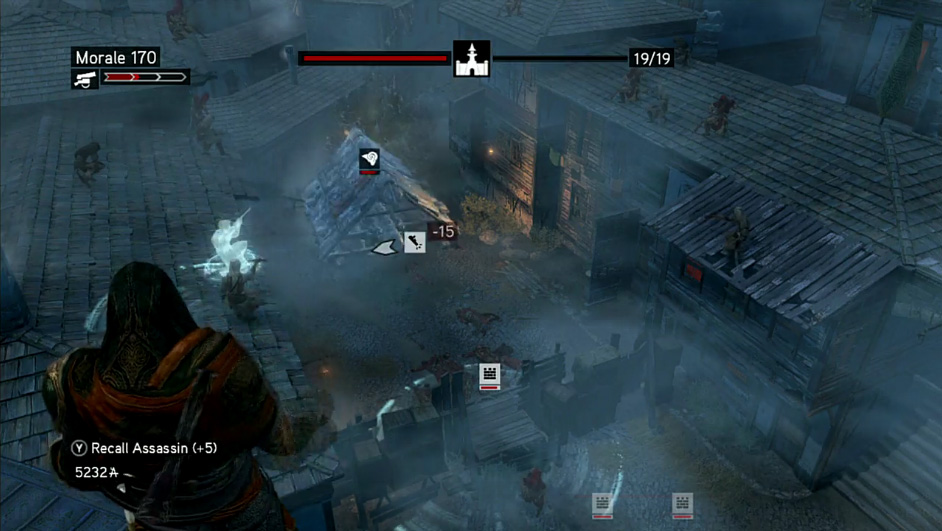
Assassin’s Creed: Revelations is a game that you should play to compare it with Uncharted 3 and Modern Warfare, which were released in the same genre. These two games, no matter how exciting they are, do not give the player any alternative but to follow the script. In particular, the colorful, crowded streets with the ability to climb on the roofs of houses are also present in Uncharted 3. But the difference is that in Uncharted 3, you will only do what the creators prescribe, while in “Revelations” you will have almost complete freedom of movement and action. And this is one of the main achievements that make “Revelations” a game that becomes more interesting to play second by second.
The number of possible developments in “Revelations” is huge. And if in the past some events were deliberately separated from each other, in this version of the game they are, on the contrary, combined. For example, the more Ezio captures the city, the more recognizable he becomes and the more fiercely the Templars oppose him. Now it is not enough for him to just kill a few guards to capture a new district. To do this, he will have to defeat their captain in a fight. The city can again pass to the Templars if they capture the city towers. But constant worry about losing territories can be avoided by reaching level 15, that is, becoming a Master Assassin. Or you can hire assassins, level them up in battles to level 15, send them to the cities of the Mediterranean, and complete two mandatory training missions with them. Some of these trainings cost money, so reaching level 15 for an assassin is not that simple.
Many events in Constantinople in “Revelations” are somehow connected to intuitive gameplay. Once you start pulling the thread of events, you can’t stop it. They can distract you from the main game missions for several hours. You can wake up when you realize that you accidentally trained six new Master Assassins and now there is no reason to worry about your territories. Of course, not everyone will like this style of gameplay, and obviously many Assassin’s Creed players will prefer a storyline that is less eventful.
Colorful and vibrant Constantinople in this game hides many pleasant surprises. Experienced players will notice that some of the early missions are now broken down into smaller tasks throughout the game’s storyline. For example, there is a small mission where you meet a guy at the pier who asks you to bring three boxes to his boat. This mission is not in the game menu, and it is not a full-fledged game task. It’s just a small quest and it’s up to you whether to take it or not.
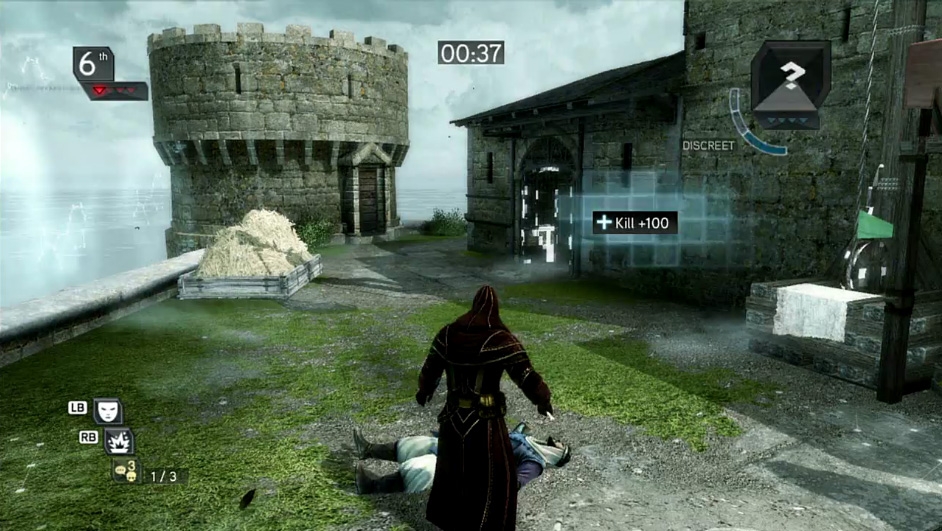
There are some changes in the city’s layout regarding hideouts. For example, some gaps in the walls where you could previously hide are now boarded up. The player has to decide whether it’s worth attracting attention to themselves with the risk of being caught for temporary shelter. There are no longer wanted posters of Ezio hanging around the city. This allows him to reduce his visibility and carry out more daring assassinations. The system of these posters was originally designed for the hero to use his acrobatic skills, avoiding streets where he could be recognized. Since rooftop traversal is now an integral part of the game, this system no longer makes sense. Quests in shops and buying landmarks have also been removed from the game.
There have been changes regarding the game’s characters as well. In particular, in the sequel, Desmond gained some positive aspects but was deprived of an interesting environment. The same environment that played a significant role in the thrilling finale of “Brotherhood”. Desmond’s friends are given no more than five minutes of screen time throughout the game, and the emotional closeness they had before is no longer visible. As a result, players who hoped to empathize with Desmond and his friends won’t be able to do so in “Revelations”.
There is one more change that may divide game enthusiasts into two camps. Desmond’s consciousness was disturbed after the events at the end of “Brotherhood”, so we will have to play as a computerized version of his mind rather than from a first-person perspective. The game will be a puzzle consisting of five levels, where you have to pave your way using triangular and rectangular plates to progress. Like everything in “Revelations”, it quickly becomes engaging. And those who collect the most geometric figures in medieval Constantinople will be rewarded in subsequent chapters involving Desmond.
Let’s briefly focus on the main storyline of the game. Ezio needs to find five keys to open a door sealed by Altaïr hundreds of years ago. He also has to help the Ottoman Assassins rid Constantinople of Templar influence. And, of course, he will fall in love. His adventures will be as dramatic as in the previous two games.
Sometimes Ezio will feel like a tourist, immersing himself in various lighthearted adventures. The missions that make up the core of the game’s storyline, however, are diverse and interesting. They can easily mix assassinations, riots, flower collecting, training assassins, and much more.
Special missions are dedicated to training each of the six Master Assassins. They have a great deal of humor exchanged between Ezio and his students. During these missions, they will encounter a variety of curious mishaps. For example, one of them kills the wrong person instead of the one Ezio ordered. He simply receives a scolding from his teacher, and the mission ends!
“Hidden location” missions are also present in the game, albeit in a slightly different form. In most of them, you still need to use acrobatic skills to reach a secret chamber and avoid confrontation. Some of these missions have become mandatory parts of the storyline. To complete one of them, you will need to have a specific item with you. And what that item is and how to obtain it, you will only find out by climbing to the top of the highest minaret of the Hagia Sophia.
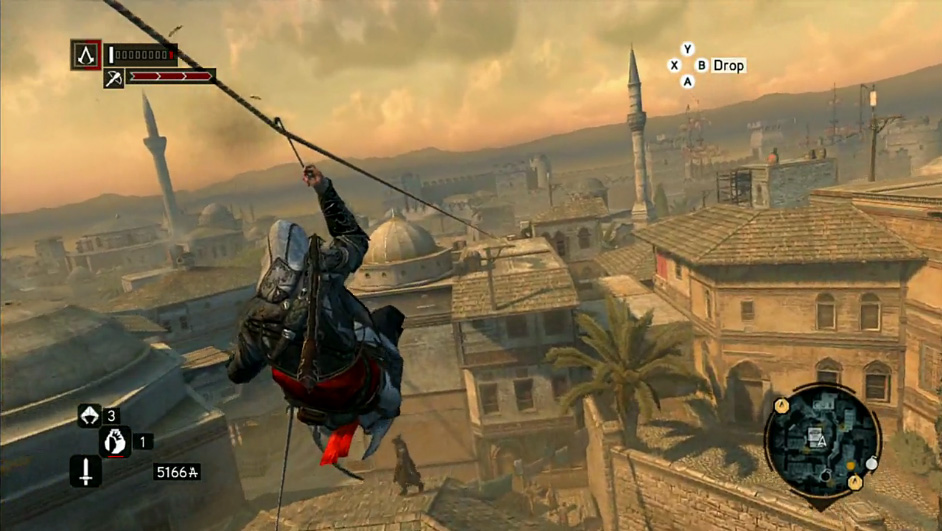
Capture theFlag Artifact
And finally, a few words about the multiplayer. It still resembles the multiplayer from Call of Duty: it has a system that tracks the opponent’s progress, and as you earn points for completing stages, more additional options become available. The main idea of the multiplayer game is also predictable: each player’s task is to find and neutralize the opponent. The errors in “on-the-fly” battles, where you could fight with civilians who looked like the opponent, have also been eliminated. Now, if you see a character resembling your target, that is your target.
One of the most outstanding features in the multiplayer of “Revelations” is artifact theft. While one player has a specific artifact, they earn points. Another player, by killing the first one, takes the artifact and hides with it, earning their own points. The catch is that points are earned faster if the player remains calm (for example, by staying in a crowd) rather than constantly running around. The highest number of points is earned when the player is closest to enemies. Imagine the tension when you are face to face with two computer-controlled characters, watching as one of the opponent’s players approaches. Maybe they have already spotted you and are ready to attack at any moment? And then, at the last second, you make a move. A chase ensues, but now all opponents can see you. A special icon highlights you for them, but as the chase continues, you earn points. The further you hide from the chase, the less the icons of the opponents will flash.
These are the innovations that await us in the game Assassin’s Creed: Revelations. Whether they will make the game outstanding or turn out to be mediocre, only time will tell. In terms of the story, for example, there haven’t been any major changes: the classic storyline of the previous games continues harmoniously. However, there is a noticeable leap forward in graphics and gameplay. A leap similar to the one that once separated a good Assassin’s Creed from an excellent Assassin’s Creed II.
None of the games released in 2011 offer players the same possibilities as “Revelations” does. And perhaps, this is a reward for those players who didn’t wait for these possibilities in 2010. Will they say “yes” to the game after completing it? We don’t have to wait long to find out. That’s when the real revelations will begin!
Share
Discuss
More Reviews
